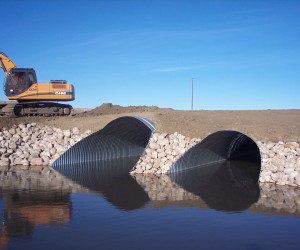Today, April 1, 2014, marks the day the new Navigation Protection Act (NPA) comes into effect. It replaces the Navigable Waters Protection Act of 1882.
The new Act contains a map of navigable waterways. If you are building a bridge on one of those, it is “covered” by the NPA and bridge owners must go through the same regulatory process for new construction. If not, you are mostly free and clear. The key word there is mostly, because if a waterway user objects to the building of a bridge the new legislation gives them recourse to ensure that the navigation provisions are built into the new structure.
In Alberta, there are six watercourses on the map. They are:
- Peace River
- Athabasca River
- Lake Athabasca
- North Saskatchewan River
- South Saskatchewan River
- Bow River
Sites that are no longer covered by the NPA will no longer have protection from civil law litigation. However, a risk based approach will be required to ensure due diligence in the consideration of navigation impacts. Simply put, it is important for engineering consultants to ensure that there are no actual navigational uses, even for non-NPA covered sites.
Alberta Transportation is producing a map which will attempt to keep track of actual navigational uses. It is not intended to be the sole due diligence method for the engineer, but it will identify sites that have actual navigational uses to ensure at least a minimum level of due diligence.
I must admit I have been waiting for this day since I began working in this industry. Navigable waters legislation, or more specifically, the interpretation of it, has been a thorn in the side of the bridge industry in the prairies for many years. Even the most hardened environmentalist (which I admit I’m not) couldn’t possibly have agreed with the previous system. Long approval processes, including advertising in local media, were required for streams that were dry except for a month or two. I’m certain most of the regulatory effort (maybe, 90%) was directed at dry streams. The system was laughable as much as it was maddening to the bridge owners who had to go through it.

Speak Your Mind